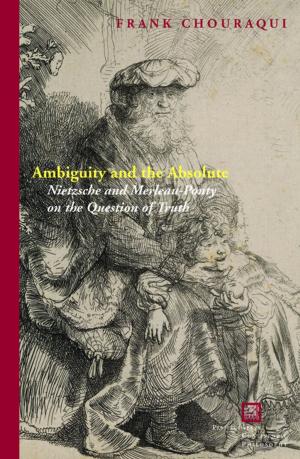New York's Golden Age of Bridges
Nonfiction, Art & Architecture, General Art, Art History, American, History, Americas, United States| Author: | Joan Marans Dim, Antonio Masi | ISBN: | 9780823253074 |
| Publisher: | Fordham University Press | Publication: | January 1, 2013 |
| Imprint: | Empire State Editions | Language: | English |
| Author: | Joan Marans Dim, Antonio Masi |
| ISBN: | 9780823253074 |
| Publisher: | Fordham University Press |
| Publication: | January 1, 2013 |
| Imprint: | Empire State Editions |
| Language: | English |
In New York’s Golden Age of Bridges, artist Antonio Masi teams up with writer and New York City historian
Joan Marans Dim to offer a multidimensional exploration of New York City’s nine major bridges, their artistic and
cultural underpinnings, and their impact worldwide.
The tale of New York City’s bridges begins in 1883, when the Brooklyn Bridge rose majestically over the East River, signaling the start of America’s “Golden Age” of bridge building. The Williamsburg followed in 1903, the Queensboro (renamed the Ed Koch Queensboro Bridge) and the Manhattan in 1909, the George Washington in 1931, the Triborough (renamed the Robert F. Kennedy Bridge) in 1936, the Bronx-Whitestone in 1939, the Throgs Neck in 1961, and the Verrazano-Narrows in 1964. Each of these classic bridges has its own story, and the book’s paintings show the majesty and artistry, while the essays fill in the fascinating details of
its social, cultural, economic, political, and environmental history.
America’s great bridges, built almost entirely by immigrant engineers, architects, and laborers, have come to symbolize not only labor and ingenuity but also bravery and sacrifice. The building of each bridge took a human toll. The Brooklyn Bridge’s designer and chief engineer, John A. Roebling, himself died in the service of bridge building. But beyond those stories is another narrative—one that encompasses the dreams and ambitions of a city, and eventually a nation.
At this moment in Asia and Europe many modern, largescale, long-span suspension bridges are being built. They are the progeny of New York City’s Golden Age bridges. This book comes along at the perfect moment to place these great public projects into their historical and artistic contexts and to inform and delight artists, engineers, historians, architects, and city planners. In addition to the historical and artistic perspectives,
New York’s Golden Age of Bridges explores the inestimable connections that bridges foster, and reveals the extraordinary impact of the nine Golden Age bridges on the city, the nation, and the world.
In New York’s Golden Age of Bridges, artist Antonio Masi teams up with writer and New York City historian
Joan Marans Dim to offer a multidimensional exploration of New York City’s nine major bridges, their artistic and
cultural underpinnings, and their impact worldwide.
The tale of New York City’s bridges begins in 1883, when the Brooklyn Bridge rose majestically over the East River, signaling the start of America’s “Golden Age” of bridge building. The Williamsburg followed in 1903, the Queensboro (renamed the Ed Koch Queensboro Bridge) and the Manhattan in 1909, the George Washington in 1931, the Triborough (renamed the Robert F. Kennedy Bridge) in 1936, the Bronx-Whitestone in 1939, the Throgs Neck in 1961, and the Verrazano-Narrows in 1964. Each of these classic bridges has its own story, and the book’s paintings show the majesty and artistry, while the essays fill in the fascinating details of
its social, cultural, economic, political, and environmental history.
America’s great bridges, built almost entirely by immigrant engineers, architects, and laborers, have come to symbolize not only labor and ingenuity but also bravery and sacrifice. The building of each bridge took a human toll. The Brooklyn Bridge’s designer and chief engineer, John A. Roebling, himself died in the service of bridge building. But beyond those stories is another narrative—one that encompasses the dreams and ambitions of a city, and eventually a nation.
At this moment in Asia and Europe many modern, largescale, long-span suspension bridges are being built. They are the progeny of New York City’s Golden Age bridges. This book comes along at the perfect moment to place these great public projects into their historical and artistic contexts and to inform and delight artists, engineers, historians, architects, and city planners. In addition to the historical and artistic perspectives,
New York’s Golden Age of Bridges explores the inestimable connections that bridges foster, and reveals the extraordinary impact of the nine Golden Age bridges on the city, the nation, and the world.















